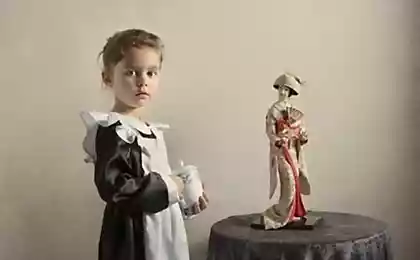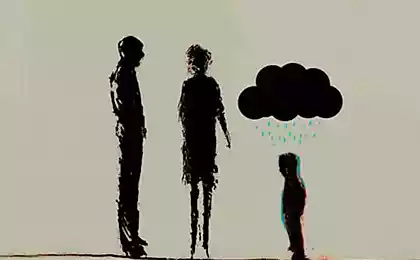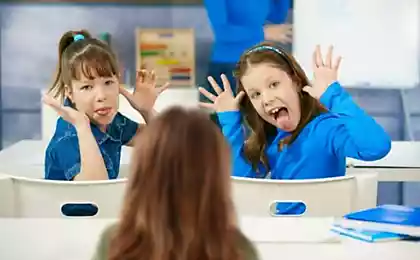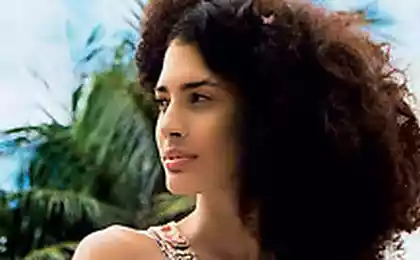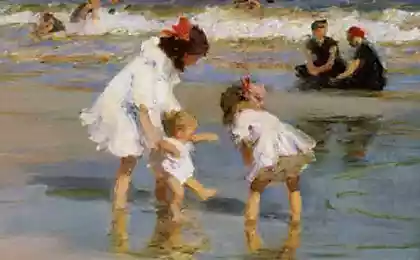510
If the baby is crying — WHAT to do and WHAT not to do
What to do and not to do if a child is crying heavily. Sudden fright, for example, or a skinned knee, or a sharp insult. I've been writing "mom", but the same works of course with any close adult.
First, what NOT to do. Not to talk in any WAY. That is absolutely. No "go you will be sorry" or "oops" or "my little". No questions about what happened, how it fell, where it hurts. QUIET. The words give the child an additional burden on the brain in a situation when it is overloaded.
Also no need to anoint the child or blowing on the wound (exceptions, like arterial bleeding, clear), heavily rocking, poke him toys or sweets. Do not enter in the situation, NO new entity under a fit. Again, to relieve the brain of the child, give him to deal with the problem, to process all.

That helps at any age:
1. Smooth, strong, soft embrace, they stand still, slightly moving away from the scene of the problem, turning away. The metaphor of the "mother quilt". Soft, warm, reliable, native. Wrap child in a blanket. "Hard", because I from the nerves of the hand trembling, and if not keep tight, tremors felt
2. To adjust their breathing. Smooth, deep, regular breaths. Notice how much breath is in such situations that go astray; as, regulation of breathing, helps to calm down; and, most importantly, as a child sinhroniziruete over time my breathing with my mother, also calming down.
3. Can be slightly shaken baby breathing in rhythm, a little caress on the back simultaneously. Smoothly, slowly, in the background, so as not to distract from the important work of a busy child — process crash.
You can still hum to sing songs without words, vocals and some. It's like breathing exercises. Again, they should be background, not to draw attention. But they help a lot of breath to adjust.
4. To monitor the breathing of a child. When it becomes smooth, the sobbing will go, to turn "back to the woods, to the stage before". To see where the trouble happened.
5. And to tell the story of the incident, "the tale of the accident." For example: "You ran here to the hill, and before it was ice, his left leg went back, and you fell and hit his chin." Follow baby's breath. Dangerous place, when the story will come to "the fell" — it most likely will increase. The child may even cry again. He lives the event. The story can be told many times. WITHOUT judgment (inadvertently, hurt, wonder) — just the facts, just how it was.
Additionally, for more senior children (to some extent verbal):
5. The children themselves often tell the story several times to family members and friends, treating. Eventually the child will come to what can the story tell, or to hear even breathing. This means that the stress is removed.
6. When the child made peace with the place and history of the incident, and ONLY then, not before, you can arrange a "debriefing". It is good to start with a question like "what do you think should have done?" That is, to change "the tale of the accident" to come up with a new one. I stress that this stage should come to cope emotionally calmed down. NEVER makes sense to say "don't do that" or "you're incompetent!" — while the child is crying. Close the mouth and keep closed, and breathe deeply and smoothly through the nose And when the child calms down, he'll tell you where the mistakes were, and how to fix them
This process takes from hours to seconds; older children are doing it inside on their own. To say "arm" the crying child (even pity) and/or not to return to the scene of the accident — fraught with psychological problems.
In this method, the child learns Self-control, learning to develop THEIR methods of analysis And problem solving. Adult helps, but the BACKGROUND does not catch management and control and gives emotional support. Meanwhile, with the help of this support, the child copes with the pain by himself, thinking over the situation himself, looking for exits itself. Child — Manager situation, boss, adult — support staff.
Perhaps the child will quickly calm down if an adult is in a calm voice to explain that everything is in order. But this short-term result. Not the child has calmed down, and reassured adult child. A lesson for the future: "don't trust Me, I'm still young, not my decision."
In addition, the child may stop crying, but remove any stress? Or just trapped inside (especially if distracted)? The accumulation of stress is fraught with many problems, both psychological and disease (cardiac, for example) in the future.
A statement "it's not scary, it's not a strong wound" by not affected me pretty hard strain. Why such things should be reported? The child should, in my opinion, to have a chance to make the JUDGMENT about the seriousness of the situation. Sometimes the situation subjectively, it seems serious, and this judgement should just be RESPECTED. I want to teach kids to ASSESS the situation on the "scariness" and to learn to understand its seriousness.
The approach to each given situation is a matter of choice. In a situation of major accidents, especially if you need to act fast (to run away from the explosion, do surgery, wear a mask) — I think an adult should take control for the sake of speed. But if I tripped or toy away – better to give the child to handle.
That is, you have to be careful, find your balance. So, first, not to seize control of the situation and the child and leave the child the opportunity to govern themselves. Secondly, not to dictate from outside judgments about the situation, and give the child the opportunity to make their own judgments. But, thirdly, to support.published
Author: Maria Droujkova
P. S. And remember, only by changing their consumption — together we change the world! ©
Join us in Facebook , Vkontakte, Odnoklassniki
Source: vk.com/mama_znaet_vse?w=wall-76658493_50757
First, what NOT to do. Not to talk in any WAY. That is absolutely. No "go you will be sorry" or "oops" or "my little". No questions about what happened, how it fell, where it hurts. QUIET. The words give the child an additional burden on the brain in a situation when it is overloaded.
Also no need to anoint the child or blowing on the wound (exceptions, like arterial bleeding, clear), heavily rocking, poke him toys or sweets. Do not enter in the situation, NO new entity under a fit. Again, to relieve the brain of the child, give him to deal with the problem, to process all.

That helps at any age:
1. Smooth, strong, soft embrace, they stand still, slightly moving away from the scene of the problem, turning away. The metaphor of the "mother quilt". Soft, warm, reliable, native. Wrap child in a blanket. "Hard", because I from the nerves of the hand trembling, and if not keep tight, tremors felt
2. To adjust their breathing. Smooth, deep, regular breaths. Notice how much breath is in such situations that go astray; as, regulation of breathing, helps to calm down; and, most importantly, as a child sinhroniziruete over time my breathing with my mother, also calming down.
3. Can be slightly shaken baby breathing in rhythm, a little caress on the back simultaneously. Smoothly, slowly, in the background, so as not to distract from the important work of a busy child — process crash.
You can still hum to sing songs without words, vocals and some. It's like breathing exercises. Again, they should be background, not to draw attention. But they help a lot of breath to adjust.
4. To monitor the breathing of a child. When it becomes smooth, the sobbing will go, to turn "back to the woods, to the stage before". To see where the trouble happened.
5. And to tell the story of the incident, "the tale of the accident." For example: "You ran here to the hill, and before it was ice, his left leg went back, and you fell and hit his chin." Follow baby's breath. Dangerous place, when the story will come to "the fell" — it most likely will increase. The child may even cry again. He lives the event. The story can be told many times. WITHOUT judgment (inadvertently, hurt, wonder) — just the facts, just how it was.
Additionally, for more senior children (to some extent verbal):
5. The children themselves often tell the story several times to family members and friends, treating. Eventually the child will come to what can the story tell, or to hear even breathing. This means that the stress is removed.
6. When the child made peace with the place and history of the incident, and ONLY then, not before, you can arrange a "debriefing". It is good to start with a question like "what do you think should have done?" That is, to change "the tale of the accident" to come up with a new one. I stress that this stage should come to cope emotionally calmed down. NEVER makes sense to say "don't do that" or "you're incompetent!" — while the child is crying. Close the mouth and keep closed, and breathe deeply and smoothly through the nose And when the child calms down, he'll tell you where the mistakes were, and how to fix them
This process takes from hours to seconds; older children are doing it inside on their own. To say "arm" the crying child (even pity) and/or not to return to the scene of the accident — fraught with psychological problems.
In this method, the child learns Self-control, learning to develop THEIR methods of analysis And problem solving. Adult helps, but the BACKGROUND does not catch management and control and gives emotional support. Meanwhile, with the help of this support, the child copes with the pain by himself, thinking over the situation himself, looking for exits itself. Child — Manager situation, boss, adult — support staff.
Perhaps the child will quickly calm down if an adult is in a calm voice to explain that everything is in order. But this short-term result. Not the child has calmed down, and reassured adult child. A lesson for the future: "don't trust Me, I'm still young, not my decision."
In addition, the child may stop crying, but remove any stress? Or just trapped inside (especially if distracted)? The accumulation of stress is fraught with many problems, both psychological and disease (cardiac, for example) in the future.
A statement "it's not scary, it's not a strong wound" by not affected me pretty hard strain. Why such things should be reported? The child should, in my opinion, to have a chance to make the JUDGMENT about the seriousness of the situation. Sometimes the situation subjectively, it seems serious, and this judgement should just be RESPECTED. I want to teach kids to ASSESS the situation on the "scariness" and to learn to understand its seriousness.
The approach to each given situation is a matter of choice. In a situation of major accidents, especially if you need to act fast (to run away from the explosion, do surgery, wear a mask) — I think an adult should take control for the sake of speed. But if I tripped or toy away – better to give the child to handle.
That is, you have to be careful, find your balance. So, first, not to seize control of the situation and the child and leave the child the opportunity to govern themselves. Secondly, not to dictate from outside judgments about the situation, and give the child the opportunity to make their own judgments. But, thirdly, to support.published
Author: Maria Droujkova
P. S. And remember, only by changing their consumption — together we change the world! ©
Join us in Facebook , Vkontakte, Odnoklassniki
Source: vk.com/mama_znaet_vse?w=wall-76658493_50757



